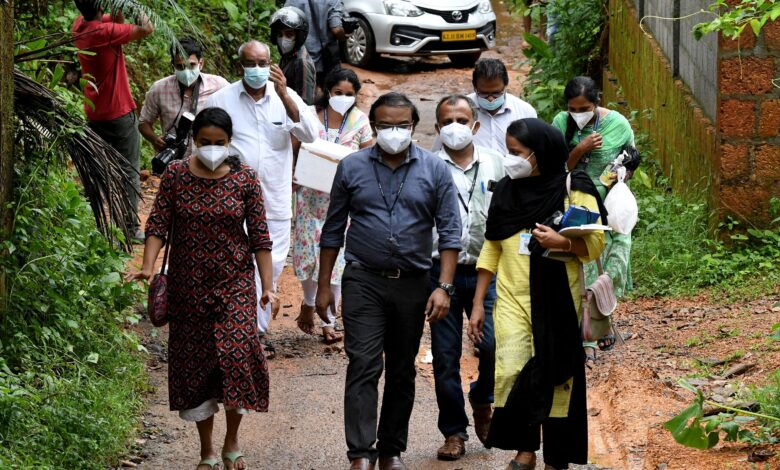Kerala Nipah Virus Outbreak: Understanding the Crisis and Response

The Kerala Nipah virus outbreak stands as a significant public health crisis, attracting global attention and prompting swift response from health authorities. Nipah virus (NiV), identified in the late 1990s in Malaysia and Singapore, is a zoonotic virus transmitted from animals to humans, and can also be transmitted through contaminated food or directly between humans. In Kerala, a state in southern India known for its lush landscapes and extensive biodiversity, the outbreak posed unique challenges and insights into handling such public health emergencies. This article aims to provide a comprehensive overview of the Kerala Nipah virus outbreak, examining its origins, impact, response strategies, and the broader implications for public health and disease management.
The Emergence of Nipah Virus in Kerala
Kerala’s first encounter with the Nipah virus outbreak occurred in 2018 and marked a critical point in the state’s public health history. The virus, which is known to cause severe illness in humans, including acute respiratory syndrome and fatal encephalitis, was first detected in the Kozhikode district. The initial cases were reported in a family, with subsequent infections occurring in healthcare settings, indicating human-to-human transmission. The origin of the virus was traced to fruit bats, a natural host of the virus, which ignited concerns over zoonotic disease transmission in densely populated regions.
Epidemiology and Clinical Features
Understanding the epidemiology and clinical features of the Nipah virus is crucial in contextualizing the Kerala outbreak. The virus’s incubation period ranges from 4 to 14 days, and it manifests as fever, headache, dizziness, and vomiting, progressing to acute respiratory distress and encephalitis in severe cases. The high mortality rate, estimated at 40% to 75%, underscores the virus’s potential for severe impact. In Kerala, the outbreak primarily affected young adults, and the transmission was largely localized, aiding in containment efforts.
Public Health Response and Containment Measures
The response to the Kerala Nipah virus outbreak was swift and multifaceted. The Kerala state government, along with the Indian Ministry of Health and Family Welfare and international organizations like the World Health Organization (WHO), implemented a series of containment measures. These included establishing isolation facilities, contact tracing, surveillance of potential cases, and community engagement initiatives to educate the public on prevention and control measures. The efforts were focused on interrupting human-to-human transmission, controlling infection in healthcare settings, and addressing the zoonotic link.
Challenges in Controlling the Outbreak
Controlling the Nipah virus outbreak in Kerala presented several challenges. The lack of a specific treatment or vaccine for the virus meant that medical interventions were limited to supportive care, making prevention and early detection crucial. Additionally, the initial uncertainty around the outbreak’s source and transmission dynamics posed difficulties in implementing targeted interventions. The situation was further complicated by the need to balance public health measures with minimizing disruption to the community and the local economy.
Lessons Learned and Preparedness for Future Outbreaks
The Kerala Nipah virus outbreak provided valuable lessons in outbreak management and preparedness. The importance of a robust surveillance system, rapid response capabilities, and strong coordination among different levels of government and health authorities was highlighted. The outbreak also underscored the need for ongoing research into zoonotic diseases, vaccine development, and effective treatment options. Kerala’s experience emphasizes the importance of preparedness and capacity-building to tackle future outbreaks of Nipah virus and other emerging infectious diseases.
Socioeconomic Impact and Community Response
The socioeconomic impact of the Nipah virus outbreak in Kerala was significant. Beyond the direct health implications, the outbreak affected the local economy, particularly tourism and agriculture, sectors crucial to Kerala’s economy. The community response, characterized by resilience and cooperation, played a vital role in managing the outbreak. Public awareness campaigns and community engagement strategies were key in addressing misinformation and stigma, ensuring compliance with public health measures, and providing psychosocial support to affected families and communities.
Global Implications and the Way Forward
The Kerala Nipah virus outbreak holds global implications, particularly in the context of emerging infectious diseases and global health security. It highlights the importance of international collaboration in disease surveillance, research, and response strategies. As the world becomes increasingly interconnected, the potential for rapid spread of infectious diseases grows, making global vigilance and preparedness essential. The Kerala experience provides a blueprint for effective outbreak response, emphasizing the need for integrated disease management strategies, community engagement, and investment in public health infrastructure.
Conclusion: Navigating Public Health Challenges in a Changing World
In conclusion, the Kerala Nipah virus outbreak represents a critical case study in managing public health emergencies in the face of emerging infectious diseases. The successful containment of the outbreak in Kerala is a testament to effective public health intervention, timely response, and the resilience of the community. It also serves as a reminder of the ongoing challenges posed by zoonotic diseases and the need for continued vigilance, research, and collaboration in the face of such threats. As the world navigates an increasingly complex public health landscape, the lessons from Kerala’s experience with the Nipah virus outbreak remain more relevant than ever.



